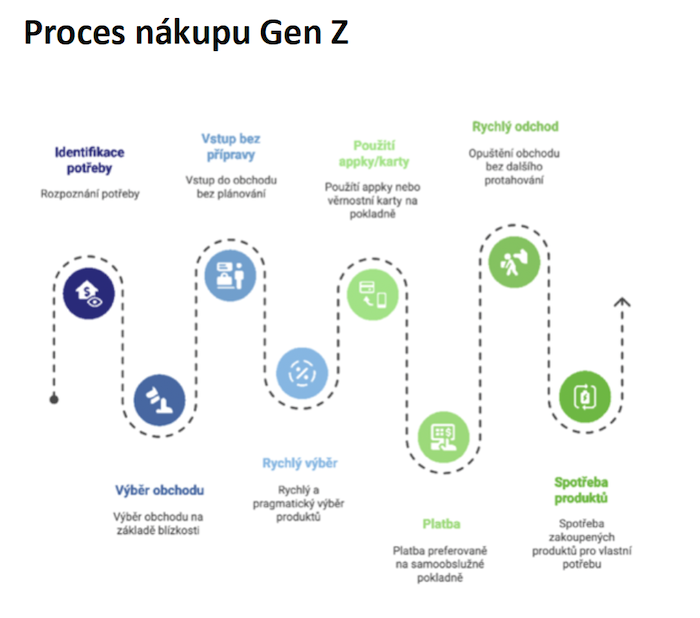Young consumers shop quickly and impulsively, while older consumers plan ahead more. Yet they have one thing in common: they expect clarity, fairness and humanity in shopping. This is according to qualitative research conducted by Insight Lab for POPAI Central Europe.
The research looked at how Generation Z, i.e. consumers aged 16 to 26, meets the middle generation represented by people aged 30 to 55 in Czech retail.
Up to 68% of younger respondents admitted to impulse shopping at least once a week - often "on the go", without a plan and with a mobile app in hand. For the middle generation, this is true for only 35%. Conversely, 73% of the middle generation makes large planned purchases, often for the whole family, compared to 42% of Gen Z.
Up to 85% of all respondents use some form of digital tool - most commonly a loyalty app, discount coupon or mobile payment. Thus, the young "click faster" while the old "count more carefully."
For retail, this means the need to offer different paths to purchase - from quick self-checkout to traditional checkout with personal contact. Younger customers appreciate efficiency, older ones certainty and fair treatment.
Queues at checkouts are a common enemy
And for all their differences, they have a common enemy: checkout queues. These were cited as the "biggest shopping annoyance" by more than 90% of all survey participants, regardless of age. If they could cancel anything in the store first, it would be the queues. It seems that the biggest unifying element of Czech retail is not loyalty points, but a common hatred of waiting.
Across generations, it appears that authenticity is the key to loyalty. For younger shoppers, it means transparency, clear product provenance and clean, easy-to-understand design - 78% of Gen Z cited this as a key selection criterion. The middle generation, on the other hand, appreciated long-lasting quality and fair price (82%).
"Authenticity is understood as a match between promises and actual behaviour. For brands, people value clear provenance, traceable information and consistent quality over time," the study says.
At the same time, more than 90% of respondents have a positive perception of the "human dimension of the purchase" - a helpful salesperson, a smile or a small gesture of courtesy.
Shouty advertising is a deterrent
Advertising remains thin ice for all age groups. Over two-thirds (67%) of respondents say they are put off by "loud or overly loud messages". In contrast, spots that are short, civil and funny, without unnecessarily pushing emotions, are popular.
Younger viewers react quickly but also leave quickly. If a commercial is boring or awkward, Gen Z will disengage within the first three seconds - conversely, civil humour works across the ages. As one participant says, "If an ad is funny, I notice it. When it screams, I turn off the TV and my brain."
The Gen Z portion is surprisingly traditional - planning for a family, a mortgage and a stable life. In contrast, the middle generation part dreams of more freedom, less work and more time to themselves. the "clash of generations" is thus more a clash of life stages than values. Both groups want the same thing - to shop fast, smart and with confidence. Across generations, the greatest joy of shopping comes when there is peace of mind, a smile and a free till.
 Source: POPAI CE
Source: POPAI CE Source: POPAI CE
Source: POPAI CEThe Clash of Generations research was conducted in September 2025 through an online Insight Forum on the Quallie.com platform. 33 respondents from all over the country took part - 16 representatives of Generation Z and 17 respondents from the middle generation.
Source: mediaguru.cz

